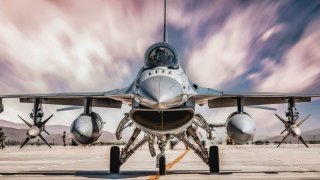The U.S. Air Force's F-16 Fighter Nightmare: No Stealth, No Problem?
As of today, the F-16 is the most commonly found fixed-wing aircraft in military service.
Summary: The F-16 Fighting Falcon, a cornerstone of the U.S. Air Force for fifty years, remains a prominent figure in global air forces despite its age and non-stealth design. Renowned for its agility, speed, and innovative features like a frameless bubble canopy and fly-by-wire system, the F-16 has proven its worth in various roles.
-Although it lacks the stealth capabilities of newer fifth-generation fighters like the F-22 and F-35, the F-16 is still valuable for less intensive tasks such as homeland and base defense, enforcing no-fly zones, and supporting more advanced aircraft with standoff weapons.
-This versatility ensures the F-16 continues to be a critical asset in modern warfare, complementing the capabilities of more sophisticated aircraft against advanced adversaries.
F-16 Fighting Falcon: Mastering the Skies for Over Fifty Years
The General Dynamics F-16 Fighting Falcon has been a valuable part of the U.S. Air Force (USAF) inventory for half a century. But as the battlefield changes, as air defense systems improve, can the non-stealth F-16 survive in a modern conflict against an advanced adversary like Russia or China?
Fifty years of service
The fourth-generation F-16 is a small, affordable single-engine fighter with multirole capabilities. Versatile and successful, over 4,600 F-16s have been built, although the USAF is no longer purchasing the ageing jet. The F-16 is distinct for its frameless bubble canopy, which is renowned for granting the pilot exceptional visibility. Inside the cockpit, the F-16 is known for its side-mounted control stick and an ejection seat that is reclined 30 degrees (to reduce the effects of g-forces on the pilot).
The F-16 also is the first aircraft to ever use a relaxed static stability/fly-by-wire flight control system—which helps the pilot control what is an inherently unstable airframe. The F-16 is highly maneuverable—and has long served as the bird of choice for the USAF Thunderbird.
As of today, the F-16 is the most commonly found fixed-wing aircraft in military service; 2,145 F-16s are currently operational in air forces around the world. The reason the F-16 is so commonly found is because the jet has proven itself to be so capable.
Much smaller and lighter than preceding aircraft (and contemporaries) the F-16 is notably agile, becoming the first aircraft built to perform 9-g maneuvers.
Yet, the F-16 is not just agile, the jet is also fast, reaching a maximum speed in excess of Mach 2. With a thrust-to-weight ratio exceeding one, the F-16 is capable of quick climbs and vertical acceleration.
When designing the F-16, General Dynamics’ objective was to create a jet that would be relatively inexpensive to build and maintain. Accordingly, the airframe is built from 80 percent aviation-grade aluminum while the leading-edge flaps, stabilizers, and vertical fins are made from bonded aluminum honeycomb structure and graphite epoxy lamination coatings.
The plane was built simply—the number of lubrication points, fuel line connections, and replaceable modules is drastically reduced relative to preceding fighter jets. The F-16 was built with an expected service life of 8,000 hours.

The F-16 Nightmare: No Stealth Is a Problem?
Alas, the F-16 was built before stealth aircraft had been invented. And while modern U.S. fighters typically incorporate stealth technology, the F-16 is a non-stealth airframe still in service today. So, without stealth, how useful would the F-16 be in a modern conflict?
Against an advanced adversary, the United States’ fifth-generation fighters, i.e., the F-22 and F-35, would take the lead on air superiority and ground strike missions. But the F-16 could still be used as a valuable supplement—providing homeland defense and base defense, enforcing no-fly zones, and deploying standoff weapons in support of stealth fighters on the frontline.
Tending to lower-priority, more routine tasks, the F-16 would free up more sophisticated fifth-generation platforms to complete more demanding roles, bolstering the U.S. war effort in the process.
About the Author: Harrison Kass
Harrison Kass is a defense and national security writer with over 1,000 total pieces on issues involving global affairs. An attorney, pilot, guitarist, and minor pro hockey player, Harrison joined the US Air Force as a Pilot Trainee but was medically discharged. Harrison holds a BA from Lake Forest College, a JD from the University of Oregon, and an MA from New York University. Harrison listens to Dokken.


